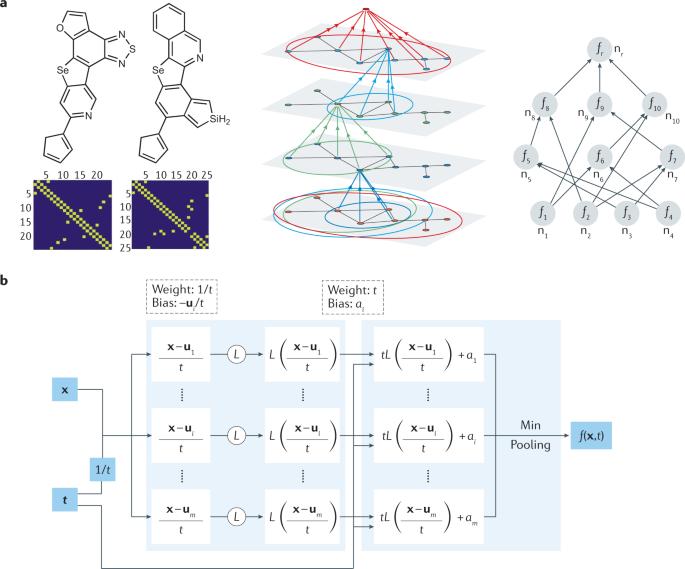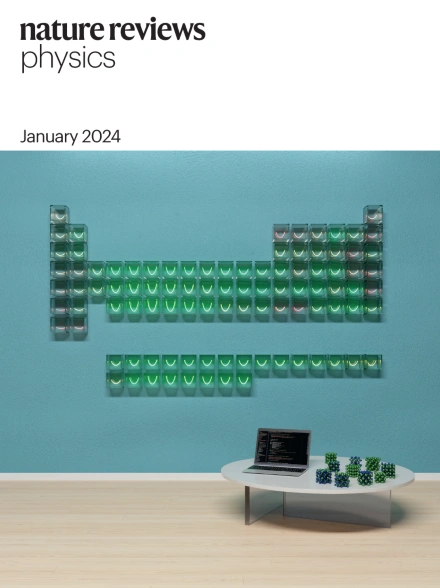Physics-informed machine learning
IF 39.5
1区 物理与天体物理
Q1 PHYSICS, APPLIED
引用次数: 970
Abstract
Despite great progress in simulating multiphysics problems using the numerical discretization of partial differential equations (PDEs), one still cannot seamlessly incorporate noisy data into existing algorithms, mesh generation remains complex, and high-dimensional problems governed by parameterized PDEs cannot be tackled. Moreover, solving inverse problems with hidden physics is often prohibitively expensive and requires different formulations and elaborate computer codes. Machine learning has emerged as a promising alternative, but training deep neural networks requires big data, not always available for scientific problems. Instead, such networks can be trained from additional information obtained by enforcing the physical laws (for example, at random points in the continuous space-time domain). Such physics-informed learning integrates (noisy) data and mathematical models, and implements them through neural networks or other kernel-based regression networks. Moreover, it may be possible to design specialized network architectures that automatically satisfy some of the physical invariants for better accuracy, faster training and improved generalization. Here, we review some of the prevailing trends in embedding physics into machine learning, present some of the current capabilities and limitations and discuss diverse applications of physics-informed learning both for forward and inverse problems, including discovering hidden physics and tackling high-dimensional problems. The rapidly developing field of physics-informed learning integrates data and mathematical models seamlessly, enabling accurate inference of realistic and high-dimensional multiphysics problems. This Review discusses the methodology and provides diverse examples and an outlook for further developments.

基于物理的机器学习
尽管在利用偏微分方程(PDEs)数值离散化模拟多物理场问题方面取得了巨大进步,但人们仍然无法将噪声数据无缝纳入现有算法,网格生成仍然很复杂,而且无法解决由参数化 PDEs 控制的高维问题。此外,解决具有隐藏物理特性的逆问题往往成本过高,需要不同的公式和复杂的计算机代码。机器学习已成为一种有前途的替代方法,但训练深度神经网络需要大量数据,而科学问题并非总能获得这些数据。相反,可以通过执行物理定律(例如,在连续时空领域的随机点)获得的额外信息来训练此类网络。这种物理信息学习将(噪声)数据和数学模型整合在一起,并通过神经网络或其他基于核的回归网络来实现。此外,还可以设计专门的网络架构,自动满足某些物理不变式,以提高准确性、加快训练速度并改善泛化效果。在此,我们回顾了将物理学嵌入机器学习的一些流行趋势,介绍了当前的一些能力和局限性,并讨论了物理信息学习在正向和反向问题上的各种应用,包括发现隐藏的物理学和解决高维问题。物理信息学习领域发展迅速,它将数据和数学模型完美地结合在一起,能够对现实的高维多物理问题进行精确推理。本综述讨论了这一方法,并提供了各种实例和对进一步发展的展望。
本文章由计算机程序翻译,如有差异,请以英文原文为准。
求助全文
约1分钟内获得全文
求助全文
来源期刊

Nature Reviews Physics
Multiple-
CiteScore
47.80
自引率
0.50%
发文量
122
期刊介绍:
Nature Reviews Physics is an online-only reviews journal, part of the Nature Reviews portfolio of journals. It publishes high-quality technical reference, review, and commentary articles in all areas of fundamental and applied physics. The journal offers a range of content types, including Reviews, Perspectives, Roadmaps, Technical Reviews, Expert Recommendations, Comments, Editorials, Research Highlights, Features, and News & Views, which cover significant advances in the field and topical issues. Nature Reviews Physics is published monthly from January 2019 and does not have external, academic editors. Instead, all editorial decisions are made by a dedicated team of full-time professional editors.
 求助内容:
求助内容: 应助结果提醒方式:
应助结果提醒方式:


